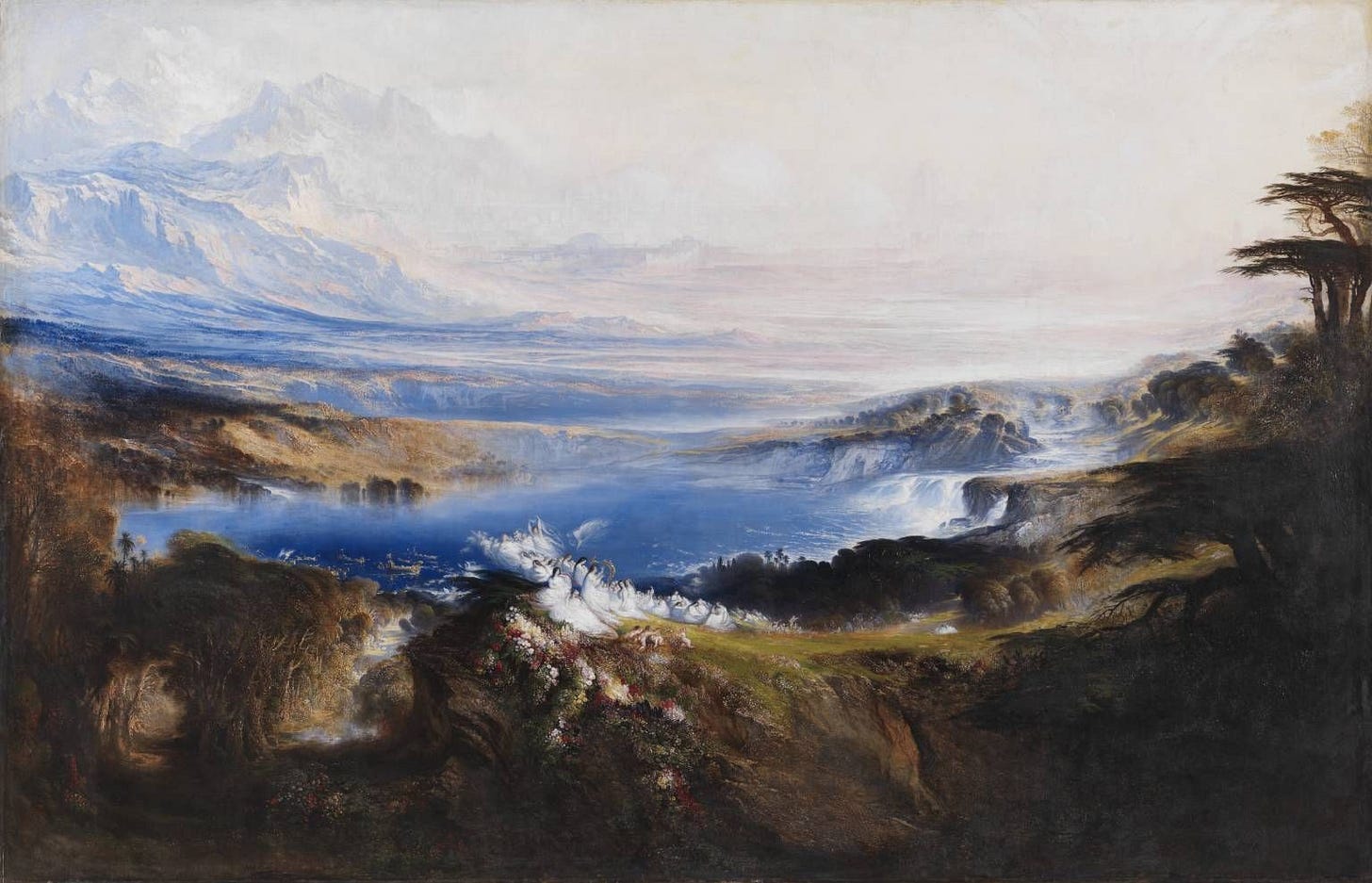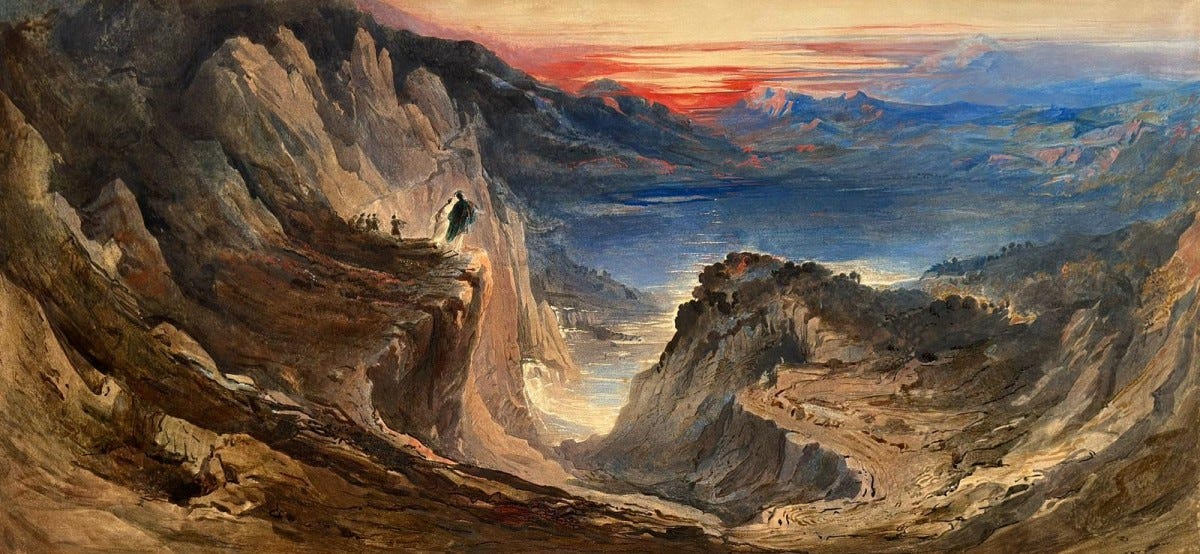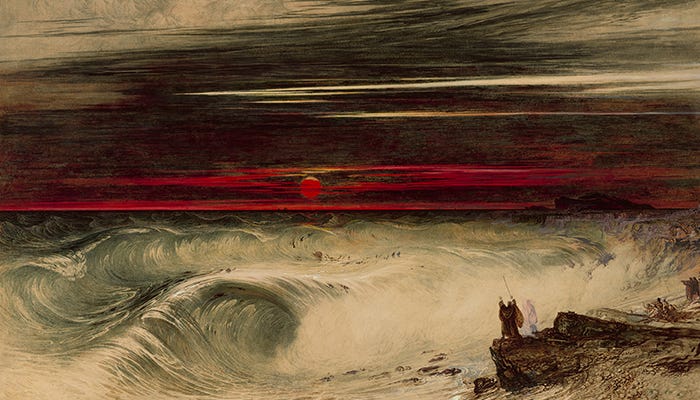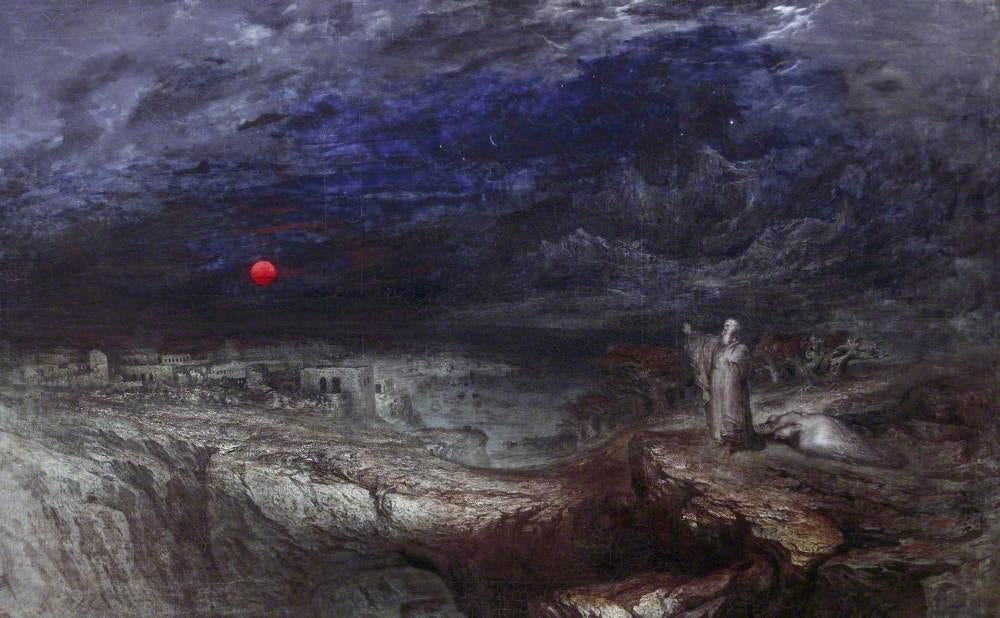Gene Wolfe's 'The Book of the New Sun' and the Quest for Timeless Sci-Fi
Part II of Will Science Fiction Ever Be Literary?
This is the second part of a three-part series. Part I | Part III
In “Sci-Fi’s Difficult Genius”, Peter Bebergal paints a compelling portrait of science fiction author Gene Wolfe, a giant of the genre. His magnum opus The Book of the New Sun is a work of stunning ambition, channeling diverse literary influences such as Faulkner, Chesterton, and Proust to create a challenging text that is unapologetically science fiction while still being firmly rooted in the Western canon.
Bebergal also notes that Gene Wolfe is rarely discussed in the context of literature as a whole. This is in spite of Wolfe collecting nearly every science fiction accolade. But why? Much like Wolfe’s The Book of the New Sun, Bebergal offers no easy answers.
Bebergal strongly implies that the main barrier to broader recognition of Wolfe is his inaccessibility. He notes all the things that make his works a challenge for readers—their dizzying lexicon, its countless “riddles, mysteries, and sleights of textual hand” in Wolfe’s novels, and “narrators who deliberately confuse or are confused—or both”. The “nasty genre tropes” of science fiction turn away literary readers, while the subversion of typical genre expectations presents challenges for science fiction fans.
But despite Bebergal’s beautiful prose, I came away unsatisfied. The Book of the New Sun is challenging, but plenty of challenging works are still remembered today. Plus, its stylistic innovation is the very thing that gives it literary merit in the first place. Shouldn’t its literary inaccessibility make it more famous in literary circles than genre circles? And yet, The Book of the New Sun remains relatively well-liked by genre fans, clocking inside the top 150 science fiction novels of all time on Goodreads.
Was Gene Wolfe’s exclusion from literary circles inevitable, a consequence of the “Great Divorce” I outlined in Part I? Or was it merely a product of circumstance? In this essay, I will explore why The Book of the New Sun, despite its literary ambitions, never managed to enter the collective memory that is the Western canon.
In Part I, I outlined how the pace of scientific progress created difficulties for those attempting to write literary science fiction. From a scientific perspective, the ever-increasing technical demands of modern science made it difficult for writers to stay on its cutting edge. Hard sci-fi writers often had to be not just writers but also technicians in their own right.
And from a literary perspective, scientific advances made it difficult to create timeless technical writing. Any serious scientific writing in the 20th century seemed destined to show its age within decades. Plus, those few with the technical knowledge to write about such things were not always gifted literary craftsmen.
Given this state of affairs, many sci-fi writers shifted their focus, adopting new scientific conventions and goals to replace the old literary ones. This ambivalence was mutual. As sci-fi distanced itself from literary fiction, literary circles wrote it off as “genre fiction” that was unworthy of serious critique.
This cultural landscape made Wolfe’s uncompromising path difficult. Not only did he have to write for a skeptical literary audience, but he also still had to solve the original reconciliation problem: how does one write timeless science fiction? Wolfe decided to square the circle by writing through a third genre: fantasy.
Unlike sci-fi, fantasy has a subgenre that leans into its conventions without losing respect in literary circles: mythopoeia. Mythopoeia is a genre that tries to create a fictionalized mythology and imbue it with spiritual themes and archetypes.
Because of its spiritual and mythical dimensions, mythopoeia was a ripe canvas for moralist, stylish, and timeless expression. It was most famously pursued by English Christian writers like William Blake, J. R. R. Tolkien, and C. S. Lewis. Many of these writers congregated as the Inklings, a literary scene that encouraged such fantasies.
A devout Christian himself, Wolfe had plenty of fantastical inspiration to draw from. His challenge was the science, since myth and science are not particularly compatible. In a sense, the two are directly opposed, given that science displaced myth as a primary explanation for the world. It is possible to mix science into myth or myth into science, but either fusion usually ends up muddying both.
So in The Book of the New Sun, Wolfe sought to find a way to turn science into myth. The background thus far may provide some insight into his writing. But even with the information provided here, Wolfe’s chosen approach would have been hard to predict.
On the surface, The Book of the New Sun is a high fantasy about Severian, a medieval torturer on a quest for forgiveness. But an observant reader will quickly realize that things are not as they seem. Mysterious objects turn out to be not medieval curios, but modern technology (e.g. digital screens, space suits). Despite its medieval trappings, The Book of the New Sun is set in the embers of a dying future civilization. And not just that, but one that is descended from our own.
Adding to this temporal disorientation is Wolfe’s intimidating prose, which employs a vocabulary wider than most English dictionaries. The Book of the New Sun’s frame story notes that its main text has been “sent from the future”, written in some not-yet extant tongue. As “translator”, Wolfe apologizes for his rough treatment of “untranslatable words”, often putting archaic words derived from Latin roots in their place:
His eyes were refulgent, brighter than any woman’s. He mispronounced quite common words: urticate, salpinx, bordereau. I cannot well tell you how bad he looked when I returned to the Citadel recently, how bad he looks now.
Of course, these aren’t real failures of translation— any such “future language” only exists within the author’s mind. However, Wolfe has such a strong command of the English language that it is difficult to tell when fact ends and speculation begins.
The ambiguity of the text constantly makes the reader forget when they are. The story might be in the future, but where is the “translator”? When is the translator? Given the time travel implied by the story, is “when” even the right question?
This technique gives Wolfe a way to cloak science in poetic low-definition, creating a temporally ambiguous atmosphere. By blending mythopoeic timelessness with future machines, Wolfe created a work that feels alien yet universal, futuristic yet ancient— a testament to his ability to transcend the boundaries of genre.
It would be easy to conclude that Gene Wolfe’s writing did not resonate because it was ahead of its time. Wolfe wrote in a time when science fiction was largely ignored in literary circles. It is true that Wolfe’s literary era was not particularly receptive to science fiction. But I would argue that the traditionalism of The Book of the New Sun actually places it behind its time.
Despite actually being 1980s science fiction, The Book of the New Sun owes more to a classical tradition that was already on its way out. Early 20th century authors like G. K. Chesterton and T. S. Eliot represented a culture that was deeply invested in the classics. Eliot’s masterwork “The Waste Land” references such things as the Battle of Mylae, the personal history of Tiresias, and the Cumaean Sibyl.
These were familiar references in the intellectual culture of the 1920s, but the salience of the classics was already fading in the time of the Inklings. By the 1980s, Western society had far less familiarity with the classics that used to permeate our culture.
But that didn’t stop Wolfe from trying to emulate his classical predecessors. Consider the following passage:
“It has been remarked thousands of times that Christ died under torture. Many of us have read so often that he was a "humble carpenter" that we feel a little surge of nausea on seeing the words again. But no one ever seems to notice that the instruments of torture were wood, nails, and a hammer; that the man who built the cross was undoubtedly a carpenter too; that the man who hammered in the nails was as much a carpenter as a soldier, as much a carpenter as a torturer. Very few seem even to have noticed that although Christ was a "humble carpenter," the only object we are specifically told he made was not a table or a chair, but a whip.
And if Christ knew not only the pain of torture but the pain of being a torturer (as it seems certain to me that he did) then the dark figure is also capable of being a heroic and even a holy figure, like the black Christs carved in Africa.”
—Gene Wolfe on the inspiration for Severian (The Castle of the Otter)
This passage is fascinating, but its ideas are clearly rooted in a bygone era. Rather than a “surge of nausea”, I personally felt ignorance— my non-religious upbringing admittedly did not even inform me that Christ was a carpenter at all. The symbolism here would be wasted on me. And the “black Christs carved in Africa” line, while not overtly racist, would not play well in today’s cultural climate.
While not from the text directly, this passage is illustrative of how many elements of The Book of the New Sun might fly over the heads of secular readers. Wolfe’s prose isn’t just difficult; it is difficult in a way that rewards engagement with the classical tradition. Perhaps if T. S. Eliot’s classical homage “The Waste Land” was published today, it would face a similarly chilly reception.
The rapid secularization of the West during the 1960s rippled through the subsequent decades, and sci-fi moved away from Christian traditionalism even faster than the rest of society. Still reeling from the New Wave, science fiction in the 1980s was far more concerned with contemporary social issues than ever before. Ender’s Game tackles the thorny ethics of conflict against another great military power. Hyperion explores a divided world in crisis over a looming apocalypse. And The Handmaid’s Tale depicts a backsliding of women’s rights in the name of religious conservatism.
This did not mesh particularly well with The Book of the New Sun’s deeply traditional, moralist themes. Severian’s quest focuses on traditional Christian virtues of sin and grace, imbuing the narrative with classical moralist undertones that feel out of step with the era. Its timeless, deeply allegorical style is harder to identify with the 1980s, to the point that it does not evoke the decade much at all.
Now, The Book of the New Sun is still discussed today, despite all the factors working against it. But I doubt it will experience a future rise in prominence.1 We revisit books not just to admire craft, but to understand the past. When readers want to remember the 1980s, it is unsurprising that they turn to The Handmaid’s Tale instead.
Despite its failure to secure a place in the Western canon, The Book of the New Sun still carved out a unique place for itself in the cultural canon as a whole. It has outlasted countless space operas that have come and gone, as well as technical stories that were admired at the time but don’t stand up to modern prose standards. Bebergal compares Wolfe’s fans to “Biblical exegetes”, and the rewarding nature of his work may continue to attract such advocates well into the future. Perhaps these exegetes will bring Wolfe into an era that is better suited to receive his message. But I’m not holding my breath.
Continue to Part III of this essay here.
I do think a Wolfe revival would be possible if he was claimed by the budding right wing counterculture. This doesn’t seem likely to me, but I would be curious to see it play out.











As a huge fan of BOTNS I really appreciated this piece!
Thanks for this article. I've read a number of Wolfe's works but haven't tackled the big one yet. You've given me some useful pointers. BTW on the subject of how SF intersects with real science, you might find my recent post interesting: https://lakefrontreview.substack.com/p/how-scientific-are-science-fiction